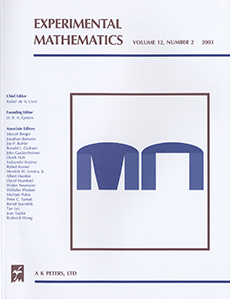Abstract
Backwards iteration of the $3x+1$ function starting from a fixed integer a produces a tree of preimages of a. Let $\T_{k} (a)$ denote this tree grown to depth k, and let $\T^*_{k}(a)$ denote the pruned tree resulting from the removal of all nodes $n \equiv 0 \pmod{3}$. We previously computed the maximal and minimal number of leaves in $\T^*_{k} (a)$ for all $a \not\equiv 0 \pmod{3}$ and all $k\le30$. Here we compare these data with predictions made using branching process models designed to imitate the growth of $3x+1$ trees, developed in [Lagarias and Weiss 1992]. We derive rigorous results for the branching process models. The range of variation exhibited by the $3x+1$ trees appears significantly narrower than that of the branching process models. We also study the variation in expected leaf-counts associated to the congruence class of $a \pmod{3^j}$. This variation, when properly normalized, converges almost everywhere as $j \to \infty$ to a limit function on the invertible 3-adic integers.
Citation
David Applegate. Jeffrey C. Lagarias. "The distribution of {$3x+1$} trees." Experiment. Math. 4 (3) 193 - 209, 1995.
Information




